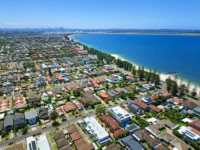- Home
- Articles
- Architectural Portfolio
- Architectral Presentation
- Inspirational Stories
- Architecture News
- Visualization
- BIM Industry
- Facade Design
- Parametric Design
- Career
- Landscape Architecture
- Construction
- Artificial Intelligence
- Sketching
- Design Softwares
- Diagrams
- Writing
- Architectural Tips
- Sustainability
- Courses
- Concept
- Technology
- History & Heritage
- Future of Architecture
- Guides & How-To
- Art & Culture
- Projects
- Interior Design
- Competitions
- Jobs
- Store
- Tools
- More
- Home
- Articles
- Architectural Portfolio
- Architectral Presentation
- Inspirational Stories
- Architecture News
- Visualization
- BIM Industry
- Facade Design
- Parametric Design
- Career
- Landscape Architecture
- Construction
- Artificial Intelligence
- Sketching
- Design Softwares
- Diagrams
- Writing
- Architectural Tips
- Sustainability
- Courses
- Concept
- Technology
- History & Heritage
- Future of Architecture
- Guides & How-To
- Art & Culture
- Projects
- Interior Design
- Competitions
- Jobs
- Store
- Tools
- More
Why Precision Matters: The Role of GD&T in Sustainable Building Practices

Building sustainably isn’t just a trend. It’s a necessity. You need precision to ensure minimal waste and maximize efficiency. How does that happen?
Geometric Dimensioning and Tolerancing or GD&T, steps in here. This method ensures each part of your building aligns perfectly, reducing errors. Think about it like using the perfect recipe for baking. Every ingredient has its place, measured precisely, ensuring your cake rises as intended.
Stick around to learn how GD&T’s meticulous approach can revolutionize sustainable building practices.
Table of Contents
ToggleUnderstanding GD&T’s Fundamental Principles
GD&T, or Geometric Dimensioning and Tolerancing, ensures precise engineering specifications. As outlined in a recent article by Jeremy Hill on GD&T basics, it uses a symbolic language to define allowable variations in form and size of parts. This clarity eliminates guesswork.
In construction, this system enhances precision, reduces waste, and improves material use. Its principles ensure every element fits perfectly together. No mismatches mean less rework and higher efficiency. And with exact measurements from the start, sustainable building practices become much more achievable.

Integrating GD&T with Digital Twin Technology
Digital twin technology creates a virtual model of a building, reflecting real-time data and conditions. Combining this with GD&T principles elevates construction precision.
You can simulate different scenarios to foresee potential issues. These digital models integrate exact specifications into the design phase.
In practice, this approach minimizes errors during construction and reduces material waste. The collaboration between these technologies fosters smarter decision-making and more efficient resource use throughout the project lifecycle.
Ensuring Material Efficiency in Sustainable Buildings
Material efficiency stands at the core of sustainable building. GD&T principles streamline this process by ensuring every component is designed and assembled accurately. This precision reduces excess material use, cutting down waste significantly.
When architects and engineers adhere to these standards, they can plan more effectively. No over-ordering or last-minute adjustments are needed.
In the long run, applying GD&T in construction not only saves resources but also enhances the durability and performance of buildings.
Extending Building Longevity with GD&T Practices
Precision engineering directly impacts the durability of structures. By ensuring each component fits perfectly, GD&T minimizes wear and tear. Fewer structural issues translate to longer-lasting buildings. Better planning for maintenance becomes possible, reducing unexpected repairs.
When construction teams use these precise methods, they create robust structures that handle environmental stresses effectively. The result is enhanced performance and extended lifespan of buildings, aligning well with sustainability goals.

Implementing Real-Time Monitoring and Adjustments
Real-time monitoring allows construction teams to detect and correct issues as they arise. GD&T principles ensure these adjustments maintain the integrity of the original design.
Using real-time data, builders can make precise tweaks that keep projects on track. This method reduces delays and material waste.
- Accuracy: Continuous monitoring ensures all components meet exact specifications.
- Efficiency: Immediate feedback allows for quick corrections, minimizing rework.
- Sustainability: By catching errors early, you conserve resources and reduce environmental impact.
This proactive approach fosters a more efficient and sustainable building process.
Enhancing Collaboration between Architects and Engineers
GD&T principles foster better collaboration between architects and engineers. When everyone works from the same precise guidelines, misunderstandings diminish. This shared framework improves communication.
Clear expectations help both parties anticipate potential issues before they escalate. With accurate designs in place, teams can seamlessly coordinate efforts. This unity ensures each component aligns perfectly during construction.
Moreover, this approach promotes streamlined workflows, simplifying architectural planning and ensuring that projects proceed smoothly without unnecessary delays or complications. By integrating GD&T into their processes, architects and engineers build stronger partnerships leading to superior results.
Utilizing BIM for Precise Measurements and Alignments
Building Information Modeling (BIM) systems integrate GD&T principles to enhance accuracy in construction. It allows for detailed 3D models that incorporate precise measurements and tolerances.
Using building information modeling software, teams can visualize how components will fit together before actual construction begins. This proactive approach minimizes errors and ensures perfect alignment of all elements.
Ultimately, this method reduces material waste and streamlines the entire building process, leading to more efficient and sustainable projects from start to finish.

Addressing Future Challenges with Advanced GD&T Techniques
Construction faces several challenges, including evolving regulations, environmental concerns, and complex designs. Advanced GD&T techniques can help address these issues as follows:
- Regulatory Compliance: Adhering to precise standards ensures buildings meet new regulations.
- Environmental Impact: Precise measurements reduce waste and improve resource use.
- Design Complexity: Using advanced techniques allows for better handling of intricate architectural features.
By adopting these methods, the construction industry can overcome hurdles and move towards more sustainable building practices. These proactive strategies will shape future building projects for the better.
Precision drives sustainability in construction. GD&T’s meticulous methods pave the way for efficient, durable buildings. Builders who embrace these practices take the lead in the future of eco-friendly architecture.
illustrarch is your daily dose of architecture. Leading community designed for all lovers of illustration and #drawing.
Submit your architectural projects
Follow these steps for submission your project. Submission FormLatest Posts
Management Best Practices for Business Facilities
The places where a business operates are more than just buildings; they...
Top 10 Examples of Innovative Kinetic Architecture
Kinetic architecture introduces movement and adaptability into the built environment through rotating...
What Are the Benefits of Regular Gutter Cleaning?
After a hard rain, water can spill over a gutter corner and...
How to Buy Your Dream Home for Beginners
Buying your first home can be exciting but also overwhelming. It’s a...












Leave a comment